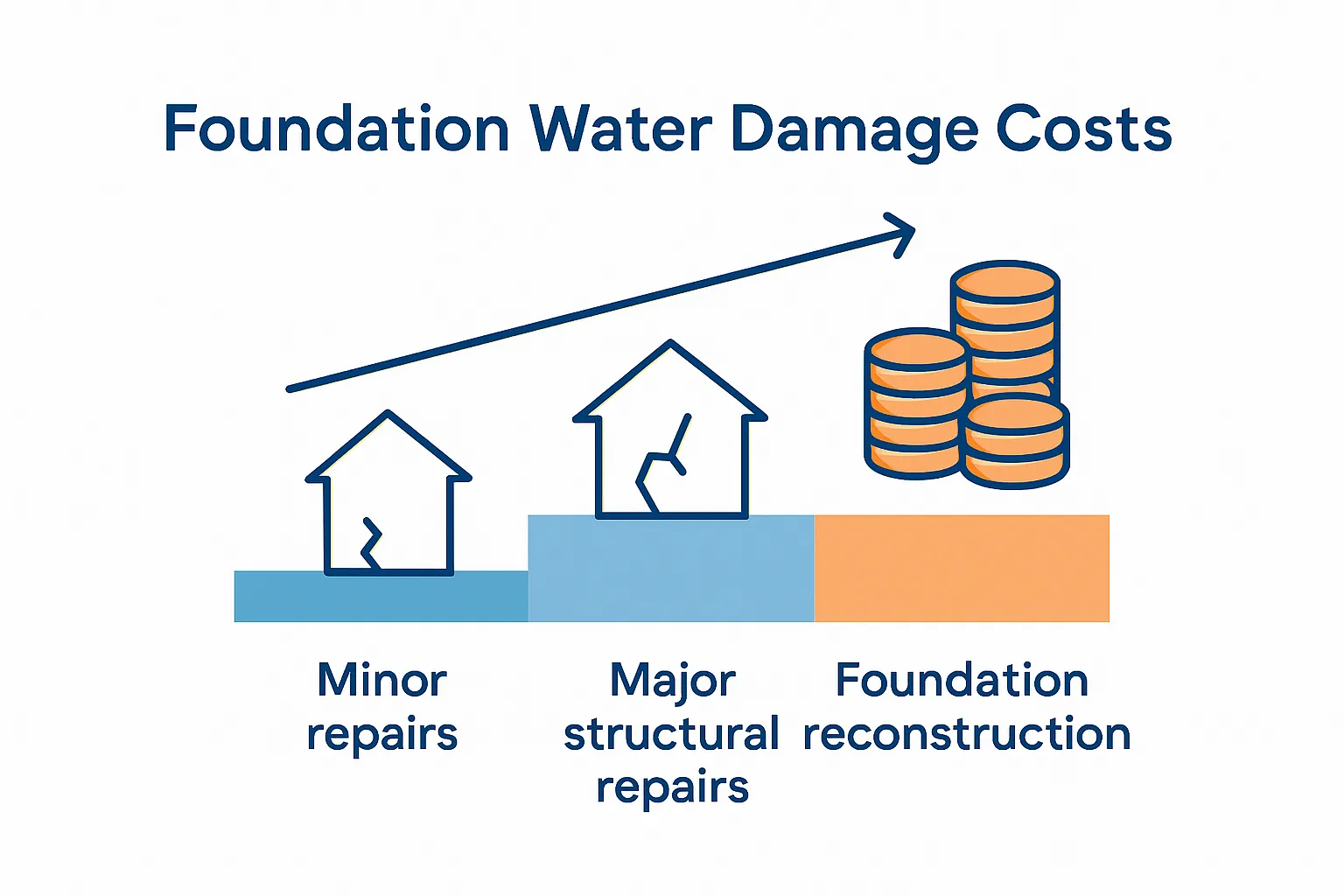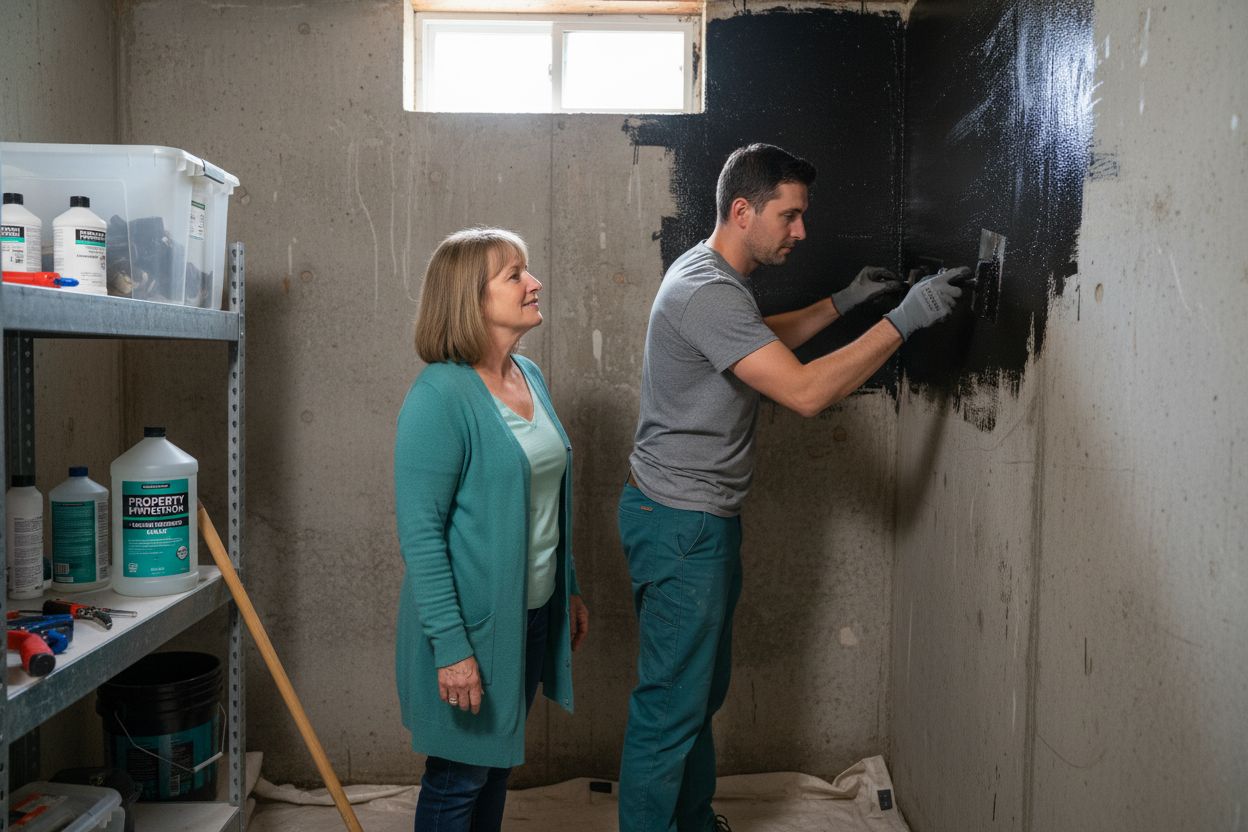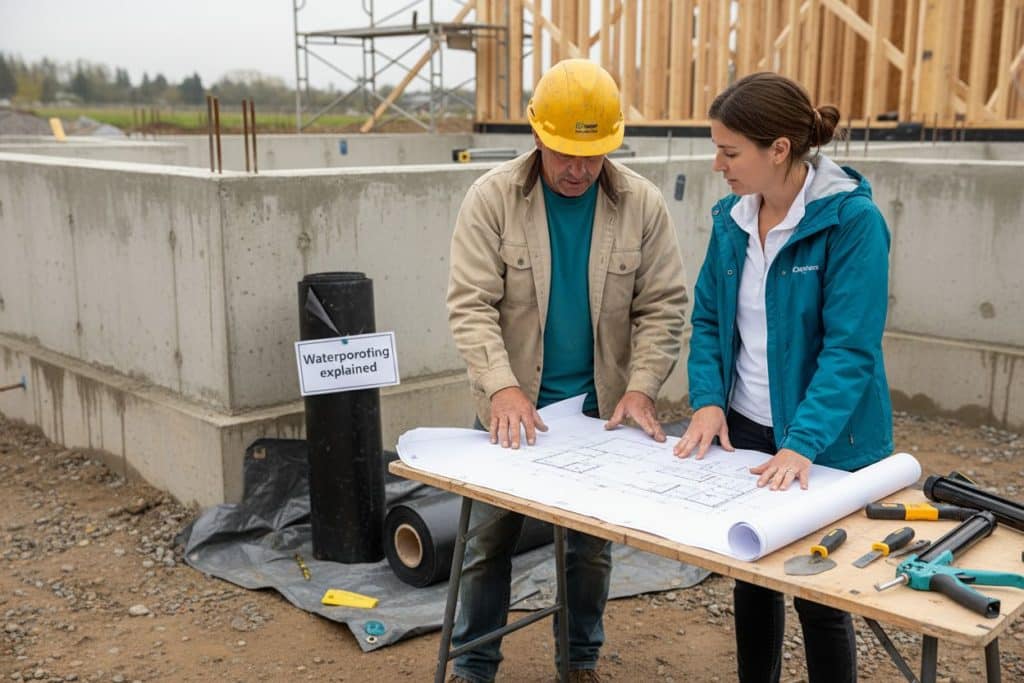Foundation waterproofing sounds like a technical afterthought but it plays a starring role in preventing disaster beneath your feet. The surprise is that unaddressed water damage can lead to structural repairs costing tens of thousands of pounds. What most people rarely consider is that the simplest waterproofing step can mean decades of stability and savings that far outweigh any upfront cost.
Table of Contents
- What Is Foundation Waterproofing And Its Purpose?
- Why Foundation Waterproofing Matters For Your Property
- How Foundation Waterproofing Works: Key Techniques And Materials
- Understanding Common Challenges And Solutions In Foundation Waterproofing
Quick Summary
| Takeaway | Explanation |
|---|---|
| Foundation waterproofing prevents costly water damage | Protecting foundations from moisture infiltration avoids severe structural issues and expensive repairs. |
| Neglecting waterproofing decreases property value | Unaddressed water damage can significantly lower property market value and lead to extensive reconstruction needs. |
| Proper drainage systems are essential | Installing perimeter drainage and managing water flow directs moisture away from foundations, preventing buildup. |
| Advanced materials enhance waterproofing effectiveness | Utilising modern, specialised materials creates durable barriers against moisture and environmental pressures. |
| Proactive maintenance extends structure lifespan | Implementing waterproofing strategies contributes to long-term stability and health of building foundations. |
What is Foundation Waterproofing and Its Purpose?
Foundation waterproofing represents a critical protective strategy designed to shield buildings from moisture infiltration through their foundational structures. This specialised technique prevents water from penetrating concrete or masonry foundations, which could otherwise lead to significant structural damage and costly repairs.
Understanding Foundation Water Intrusion Risks
Foundations are inherently vulnerable to water damage due to their direct contact with soil and underground moisture. When water consistently seeps through foundation walls, it creates multiple potential problems:
- Structural weakening of concrete and steel reinforcements
- Mould and mildew growth in subterranean spaces
- Compromised indoor air quality
- Potential basement flooding
- Reduced property value and structural integrity
Core Principles of Foundation Waterproofing
Foundation waterproofing works through multiple protective mechanisms, creating barriers that repel water and redirect moisture away from critical structural elements. Professional waterproofing systems typically involve applying specialised membranes, sealants, and drainage solutions that prevent water molecules from penetrating foundation walls.
The primary objective is establishing a comprehensive moisture management system that keeps foundations dry, stable, and resistant to environmental pressures. By implementing strategic waterproofing techniques, property owners can significantly extend their building’s lifespan and protect their substantial investment from progressive water-related deterioration.
Effective foundation waterproofing is not merely a preventative measure but a proactive approach to maintaining structural health, ensuring buildings remain stable, dry, and structurally sound for decades.
Why Foundation Waterproofing Matters for Your Property
Foundation waterproofing transcends simple maintenance and represents a critical investment in long-term property protection. Property owners who understand the profound implications of robust foundation waterproofing can prevent substantial financial losses and preserve their building’s structural integrity.
Financial and Structural Consequences of Water Damage
Neglecting foundation waterproofing can lead to catastrophic and expensive consequences. Water intrusion gradually erodes concrete, compromises steel reinforcements, and creates environments conducive to structural deterioration. Basement waterproofing methods become crucial in mitigating these risks and protecting property value.
The potential financial impact of water damage is significant.

- Structural repairs costing tens of thousands of pounds
- Decreased property market value
- Potential complete foundation reconstruction
- Compromised building safety standards
- Increased insurance premiums
Long-Term Property Health and Value Protection
Waterproofing is not merely an expense but a strategic investment in property sustainability. By creating comprehensive moisture barriers, property owners can:
- Extend the lifespan of foundational structures
- Prevent progressive structural degradation
- Maintain optimal indoor environmental conditions
- Protect against mould and mildew proliferation
- Enhance overall property resilience
Professional foundation waterproofing represents a proactive approach to property management, transforming potential vulnerabilities into robust, long-lasting structural systems.

How Foundation Waterproofing Works: Key Techniques and Materials
Foundation waterproofing involves sophisticated techniques and specialised materials designed to create comprehensive moisture barriers around structural foundations. Understanding these intricate approaches helps property owners implement robust protection strategies against potential water infiltration.
Waterproofing Material Technologies
Modern foundation waterproofing relies on advanced materials engineered to repel moisture and withstand significant environmental pressures.
To clarify the advanced materials used in foundation waterproofing, the following table summarises the main technologies and their key features.
| Waterproofing Material | Main Features |
|---|---|
| Liquid-applied membranes | Flexible, seamless barrier; elastomeric properties |
| Polyurethane-based sealants | High flexibility; strong adhesion |
| Bituminous coating compounds | Durable; resists soil chemicals and moisture |
| Cementitious waterproofing materials | Easy application; suitable for masonry and concrete |
| Synthetic polymer barriers | High performance; resists pressure and water ingress |
- Liquid-applied membranes with elastomeric properties
- Polyurethane-based sealants
- Bituminous coating compounds
- Cementitious waterproofing materials
- High-performance synthetic polymer barriers
Strategic Water Redirection Techniques
Waterproofing goes beyond simple barrier creation and involves strategic water management principles. Professional techniques focus on redirecting potential moisture through carefully designed drainage systems that prevent water accumulation around foundation perimeters.
Key water management strategies include:
- Installing perimeter drainage systems
- Creating positive slope gradients away from foundation walls
- Implementing French drain configurations
- Utilising geotextile membrane technologies
- Developing comprehensive subsurface water management networks
These sophisticated approaches transform foundation protection from reactive maintenance to proactive environmental engineering, ensuring comprehensive moisture control and structural integrity preservation.
By combining advanced materials with intelligent design principles, property owners can effectively shield their buildings against potentially devastating water-related structural challenges.
Understanding Common Challenges and Solutions in Foundation Waterproofing
Foundation waterproofing presents complex challenges that require sophisticated diagnostic and remedial approaches. Property owners must recognize potential issues early to prevent extensive structural damage and implement targeted interventions.
Identifying Critical Foundation Moisture Vulnerabilities
Foundation structures face multiple moisture intrusion pathways that compromise structural integrity. Exterior basement waterproofing techniques become essential in addressing these multifaceted challenges.
Most significant foundation moisture vulnerability points include:
- Horizontal and vertical foundation wall cracks
- Improper soil grading around building perimeters
- Inadequate external drainage systems
- Compromised foundation membrane integrity
- Underground water table fluctuations
Diagnostic and Remediation Strategies
Successful foundation waterproofing requires comprehensive diagnostic approaches that blend advanced technological assessment with traditional engineering principles. Professional interventions typically involve:
- Thermal imaging scanning to detect moisture infiltration zones
- Comprehensive geological and hydrological site assessments
- Precision crack repair and structural reinforcement techniques
- Advanced moisture barrier reconstruction
- Strategic landscape redesign for optimal water management
By understanding these intricate challenges, property owners can develop proactive waterproofing strategies that protect structural investments and prevent potentially catastrophic water-related deterioration.
The following table provides an overview of common foundation moisture vulnerabilities and typical diagnostic or remediation strategies as referenced in the article.
| Vulnerability Point | Diagnostic Approach | Remediation Strategy |
|---|---|---|
| Foundation wall cracks | Visual inspection, thermal imaging | Precision crack repair, structural reinforcement |
| Poor soil grading | Site assessment, level checking | Landscape redesign, grading correction |
| Inadequate drainage systems | Drainage inspection, site survey | Installing or upgrading perimeter drains |
| Membrane integrity issues | Physical inspection, leak tracing | Barrier reconstruction, membrane replacement |
| Water table fluctuations | Hydrological site assessment | Subsurface drainage system installation |
Protect Your Property with Expert Foundation Waterproofing
Worried about water damaging your foundation and leading to costly repairs or even structural failure? At Pro Waterproofing, we understand that unchecked water intrusion, hidden cracks and inadequate drainage can erode your peace of mind just as much as your property value. Our solutions are specifically designed to address the very risks explained in our article, from advanced moisture barriers to comprehensive drainage redesign. Whether you are protecting a home or a commercial building, our tailored waterproofing expertise helps you prevent mould, protect your investment and keep your foundation dry for the long term.
Do not wait until cracks turn into major repairs. Take the first step now by visiting Pro Waterproofing and discover how our proven strategies can safeguard your property. Request your personalised assessment today and speak to a specialist who will keep your foundation secure and your building strong.
Frequently Asked Questions
What is foundation waterproofing?
Foundation waterproofing is a protective strategy that prevents water from penetrating through concrete or masonry foundations, thereby safeguarding structures from moisture-related damage.
Why is foundation waterproofing important?
Foundation waterproofing is crucial as it helps maintain structural integrity, prevents mould and mildew growth, improves indoor air quality, and protects property value by mitigating potential water damage risks.
What are common methods used in foundation waterproofing?
Common methods include applying liquid-applied membranes, polyurethane-based sealants, and bituminous coatings, along with installing drainage systems and implementing proper landscape grading to redirect water away from foundations.
How can I identify moisture vulnerabilities in my foundation?
You can identify moisture vulnerabilities by inspecting for cracks in walls, assessing soil grading, checking drainage systems, and considering the integrity of existing waterproofing membranes. Additionally, employing thermal imaging can help detect moisture infiltration effectively.


